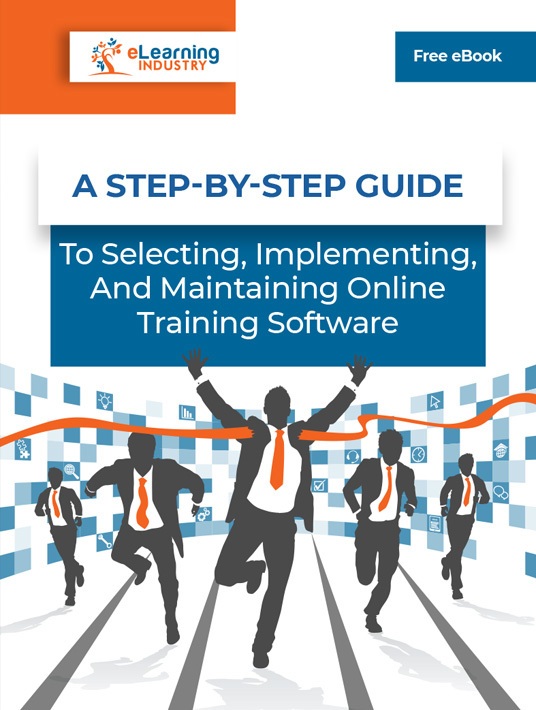Online Training Software Implementation: How To Steer Clear Of Pitfalls
Online training is great in theory. But you have to be careful of the way you introduce and implement it. Do it wrong and you’ll have your whole team rebelling against your beloved education project. Creating the right attitude towards your online training strategy is the best way to get it off the ground. And the more your team members are on board, the more they will benefit from this undertaking. Otherwise, it will just be a waste of time and money for everyone which is inadvertently bad for business. Here are 7 online training software implementation pitfalls to steer clear of.

1. Refusing To Winnow Data
There are multiple approaches to eLearning development. An eLearning developer could build an editable eLearning template and allow you to populate it yourself, or they could work with you to tailor online training materials for your specific organization. In other cases, a more general online training course is constructed. It contains information that can cut across industries and sectors. All these systems can be affected by TMI (Too Much Information). In a social context, TMI refers to sharing unnecessarily personal information. It’s telling people things they don’t need or (should) want to know. In an educational context, TMI is cramming too much content into a single course. Sort and sift by module, position, or department. Don’t overload corporate learners with overly-detailed lessons irrelevant to their job description.
2. Ignoring Former Corporate Learners
Sometimes, corporate eLearning is too goal-oriented to be productive. It focuses on achieving compliance or gaining completion numbers without reviewing the online training experience. The trick here is that corporate learners skate through the online training course and gain minimal benefit. It becomes an exercise in going through the motions, which abuses corporate resources. Many online training courses include a feedback session, but eLearning developers and corporate managers rarely review this material. Just by looking at post-course commentary, the online training course can be drastically improved with no extra expense or effort. You simply utilize the tools you already have to enhance the online training experience. This could have a direct effect on sales.
3. Retaining Outdated Online Training Content
In the same way, eLearning developers and team leaders may forget to update their online training content. They may feel their online training material is static. They will create an online training course and forget all about it. Even if there are no current significant changes in the industry, there are other ways to upgrade. You could update your online training software to eliminate bugs and vulnerabilities. Or incorporate new channels of learning, like social media or real-time video. You can even refresh the online training course by rebranding the platform or using more relevant characters and models. Lastly, use technological advances to make your online training strategy more concise, or less data-heavy in terms of bandwidth usage.
4. Neglecting Inter-Platform Links
Nowadays, most online platforms are connected. You can integrate websites, social media, and communication channels with a single line of code. Simply download the right online platform and your online footprint becomes synchronized. While this can be tricky on an individual level, it has numerous benefits for online education. Social media integration to learning material can make it easier to consume and absorb information. It’s also an underutilized marketing tool. It helps you reach corporate learners exactly where they are and increase your ROI by slashing your advertising spend. And it gives you access to younger, more digitally-oriented corporate learners. You can reach them in their natural habitat.
5. Allowing Unrestricted Devices
Ideally, online training courses are built to work with multiple devices. The idea is to let you study on the device that is native to you. However, allowing unlimited devices raises several problems. One, it’s an extra expense for eLearning developers because they have to incorporate a wider range of compatibility. Two, it can create a security risk, making your online training content vulnerable. One way to deal with this is to have your corporate learners register their devices. This way, they can each be secured with additional software. You can also request corporate learners to use a designated online training course app instead of a live web portal. This offers partial protection against phishing.
6. Clogging Official Bandwidth
Speaking of apps, when corporate learners use personal devices for online training they have to connect to the communal network. Many devices have background apps, which can be quite data-heavy. Corporate learners will inadvertently hog the training bandwidth, slowing it down for everyone. It causes problems that will be blamed unjustly on poor online training course construction.
Upon online training software implementation, audit all connected devices. Many data inspectors can identify apps and activities that are over-using data. Advise corporate learners that they should turn off the offending apps, at least for the duration of the lesson.
7. Monitoring Studies In Secret
Unfortunately, some IT departments take a blanket approach to the issue of flooded bandwidth. Instead of speaking to users as adults, they simply choke the offender’s access. This makes device owners paranoid and rebellious. If they feel like they are being spied on or harassed, they’ll use other methods to get around your censorship. Some of these methods create a security risk and will do more damage than simply broadening your bandwidth. Instead of policing connections and blocking without notice, speak to your team. Tell them what you’re avoiding and why, or offer a separate channel for non-training use. They can use the secondary network for personal surfing, leaving the main training connection unmolested.
Online training software implementation can be a trial by fire if you don’t know the risks involved. However, a few simple pointers can help you avoid common mistakes and improve your online training effectiveness. Only include relevant online training content. Act on corporate learner feedback and incorporate it where possible. Lastly, know the technical limitations of your new online training software so that you optimize accessibility and achieve the desired results.
Download our eBook A Step-By-Step Guide To Selecting, Implementing, and Maintaining Online Training Software to discover how to select, implement, and maintain your online training software. We’ll even share tips to help you personalize online training content and highlight the top features to look for in your new system.






